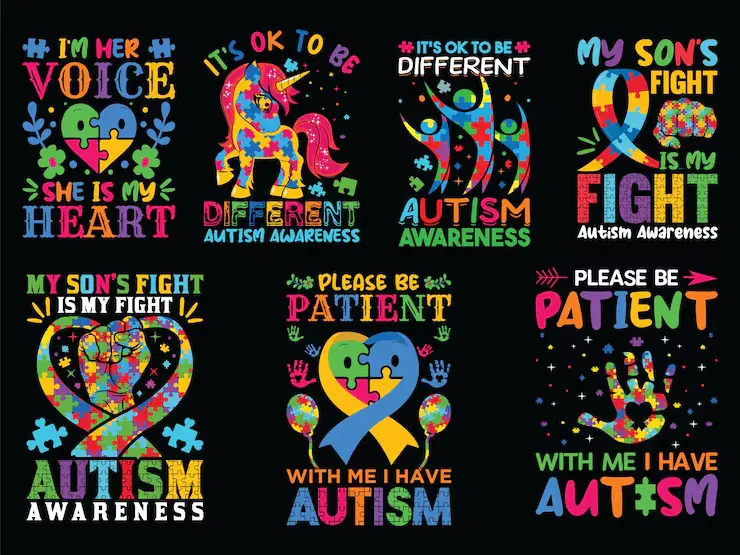Unraveling ABA Therapy Principles, Techniques, and Effectiveness

Introduction:
Applied Behavior Analysis (ABA) therapy is a comprehensive and evidence-based approach to understanding and modifying behavior. Widely recognized for its effectiveness in addressing a variety of behavioral challenges, ABA therapy is particularly prominent in the treatment of Autism Spectrum Disorder (ASD). This article provides an in-depth exploration of ABA therapy, covering its fundamental principles, common techniques, and the evidence supporting its effectiveness.


Page Contents
- 1 Unraveling ABA Therapy Principles, Techniques, and Effectiveness
- 2 Effectiveness of ABA Therapy
- 3 Here’s an expanded explanation of the four key principles of ABA therapy with examples:
- 4 The evolution of Applied Behavior Analysis (ABA) therapy into the leading intervention for Autism Spectrum Disorder (ASD) is a testament to decades of scientific research, clinical innovation, and advocacy efforts. The journey from its inception to widespread recognition and acceptance has been marked by significant milestones and contributions from researchers, practitioners, and individuals affected by ASD.
- 5 Let’s explore the key factors that have propelled ABA therapy to the forefront of ASD treatment:
- 6 Here are some key considerations regarding the duration of ABA therapy:
- 7 Here are 3 reasons why Applied Behavior Analysis (ABA) therapy is interlinked with experimental psychology:
- 8 Conclusion
Unraveling ABA Therapy Principles, Techniques, and Effectiveness
Understanding ABA Therapy
Applied Behavior Analysis (ABA) therapy is rooted in the principles of behaviorism, which emphasize the role of environmental factors in shaping behavior. ABA therapists systematically analyze behavior by identifying antecedents (events that precede behavior) and consequences (events that follow behavior), and then use this understanding to develop interventions that promote desired behaviors and reduce problematic ones.
4 Key Principles of ABA Therapy
- Behavior Modification: ABA therapy focuses on modifying behavior by identifying and manipulating environmental variables that influence behavior.
- Individualization: Interventions are tailored to the unique needs and abilities of each individual, ensuring that therapy is personalized and effective.
- Data-Driven Approach: ABA therapists collect and analyze data on behavior change, allowing them to make informed decisions and adjust interventions as needed.
- Reinforcement: Positive reinforcement is a central component of ABA therapy, with desired behaviors being systematically reinforced to increase their frequency and intensity.
4 Common Techniques Used in ABA Therapy
- Discrete Trial Training (DTT): In DTT, skills are broken down into small, manageable steps, and individuals are taught through repeated trials, reinforcement, and prompting as needed.
- Naturalistic Teaching: This approach involves teaching skills in natural environments and situations, using the individual’s interests and motivations as learning opportunities.
- Prompting and Fading: Prompting involves providing cues or assistance to help individuals perform a desired behavior, with prompts gradually faded over time as independence increases.
- Functional Communication Training (FCT): FCT teaches individuals alternative ways to communicate their needs and desires, reducing the occurrence of problem behaviors like aggression or tantrums.

Effectiveness of ABA Therapy
Numerous studies have demonstrated the effectiveness of ABA therapy in improving various skills and behaviors in individuals with ASD and other developmental disorders. Research has shown that ABA therapy can lead to significant improvements in communication, social skills, adaptive behavior, and academic performance. Long-term outcomes indicate that early and intensive intervention using ABA principles can result in better prognosis and quality of life for individuals with ASD.

Here’s an expanded explanation of the four key principles of ABA therapy with examples:
- Behavior Modification: ABA therapy focuses on modifying behavior by identifying and manipulating environmental variables that influence behavior. This principle emphasizes the idea that behavior is learned and can be changed through systematic interventions.Example: Suppose a child with ASD engages in repetitive hand-flapping behavior when presented with a loud noise. ABA therapists would conduct a functional behavior assessment to determine the antecedents (loud noise) and consequences (attention from caregivers) of the hand-flapping behavior. Based on this analysis, interventions may include providing the child with ear protection (manipulating the environment) to reduce the aversive response to the loud noise, thereby decreasing the occurrence of hand-flapping behavior.
- Individualization: ABA interventions are tailored to the unique needs and abilities of each individual, ensuring that therapy is personalized and effective. This principle recognizes that individuals with ASD and other developmental disorders have diverse strengths, challenges, and preferences.Example: Two children with ASD may exhibit different communication deficits. While one child may struggle with verbal communication and benefit from speech therapy interventions, another child may have difficulty with non-verbal communication and benefit from alternative communication methods such as picture exchange systems or sign language. ABA therapists individualize interventions based on the specific communication needs and abilities of each child.
- Data-Driven Approach: ABA therapists collect and analyze data on behavior change, allowing them to make informed decisions and adjust interventions as needed. This principle emphasizes the importance of objective measurement and continuous monitoring of progress.Example: ABA therapists use data collection tools such as behavior charts, frequency counts, and ABC (Antecedent-Behavior-Consequence) observation forms to track target behaviors and intervention outcomes. By analyzing data over time, therapists can identify trends, determine the effectiveness of interventions, and make data-driven decisions about modifying or intensifying treatment strategies.
- Reinforcement: Positive reinforcement is a central component of ABA therapy, with desired behaviors being systematically reinforced to increase their frequency and intensity. This principle capitalizes on the motivational power of rewards to promote behavior change.Example: A child with ASD who is learning to follow instructions during structured tasks may be reinforced with praise, tokens, or preferred items (e.g., stickers, toys) for completing each step of the task. As the child demonstrates improved compliance with instructions, reinforcement can be gradually faded to promote independent performance of the task. Consistent reinforcement helps to strengthen desired behaviors and encourages their repetition in similar situations.
These four key principles of ABA therapy form the foundation of effective intervention strategies, guiding therapists in designing individualized, data-driven interventions that promote positive behavior change and improve outcomes for individuals with ASD and other developmental disorders.
The evolution of Applied Behavior Analysis (ABA) therapy into the leading intervention for Autism Spectrum Disorder (ASD) is a testament to decades of scientific research, clinical innovation, and advocacy efforts. The journey from its inception to widespread recognition and acceptance has been marked by significant milestones and contributions from researchers, practitioners, and individuals affected by ASD.
Let’s explore the key factors that have propelled ABA therapy to the forefront of ASD treatment:
- Foundations in Behaviorism: ABA therapy traces its roots to behaviorism, a psychological approach that emphasizes the importance of observable behavior and environmental factors in shaping behavior. Pioneers such as B.F. Skinner laid the groundwork for ABA by developing principles of operant conditioning and behavior modification, which provided the theoretical foundation for ABA interventions.
- Early Research and Development: In the 1960s and 1970s, researchers began applying behavior analysis principles to address the needs of individuals with developmental disabilities, including ASD. Landmark studies by O. Ivar Lovaas and his colleagues demonstrated the effectiveness of early intensive behavioral intervention (EIBI) in improving outcomes for children with ASD, laying the groundwork for ABA as a treatment approach.
- Clinical Innovation and Application: ABA therapists and practitioners played a crucial role in translating research findings into clinical practice. Through rigorous assessment, individualized intervention planning, and systematic implementation of ABA techniques, therapists began to witness significant improvements in communication, social skills, and adaptive behavior in individuals with ASD.
- Advancements in Early Intervention: Recognizing the importance of early intervention, researchers and clinicians emphasized the need for timely and intensive ABA therapy for young children diagnosed with ASD. Early intervention programs, such as the Early Start Denver Model (ESDM) and the Lovaas Model, integrated ABA principles into comprehensive intervention approaches, leading to improved outcomes for children with ASD.
- Empirical Support and Evidence-Based Practice: Over the years, a growing body of empirical research has provided robust evidence for the effectiveness of ABA therapy in addressing core deficits associated with ASD. Randomized controlled trials, meta-analyses, and longitudinal studies have consistently demonstrated the efficacy of ABA interventions in promoting skill acquisition, reducing problem behaviors, and enhancing overall functioning in individuals with ASD.
- Recognition and Endorsement: ABA therapy gained recognition and endorsement from professional organizations, governmental agencies, and advocacy groups, further solidifying its status as the gold standard for ASD treatment. Organizations such as the American Psychological Association (APA), the American Academy of Pediatrics (AAP), and the National Institute of Mental Health (NIMH) have endorsed ABA therapy as an evidence-based practice for ASD.
- Parental Advocacy and Demand: Parents and caregivers of individuals with ASD played a pivotal role in advocating for access to ABA therapy and driving demand for services. Their tireless efforts to raise awareness, promote research funding, and advocate for insurance coverage for ABA therapy have been instrumental in expanding access to quality care for individuals with ASD.
- Continued Innovation and Collaboration: ABA therapy continues to evolve and adapt to meet the evolving needs of individuals with ASD. Ongoing research, technological advancements, interdisciplinary collaboration, and community engagement efforts contribute to the ongoing refinement and improvement of ABA interventions.
In summary, the ascendance of ABA therapy as the leading intervention for Autism Spectrum Disorder (ASD) is the culmination of decades of scientific inquiry, clinical innovation, advocacy efforts, and collaborative partnerships. By leveraging the principles of behaviorism and applying evidence-based practices, ABA therapists have transformed the landscape of ASD treatment, offering hope and opportunities for individuals with ASD to reach their full potential.
The duration of Applied Behavior Analysis (ABA) therapy for children with Autism Spectrum Disorder (ASD) can vary depending on several factors, including the child’s individual needs, severity of symptoms, age at intervention onset, intensity of therapy, and family involvement. While there is no one-size-fits-all answer, ABA therapy typically involves early and intensive intervention delivered over an extended period to maximize effectiveness.
Here are some key considerations regarding the duration of ABA therapy:
- Early Intervention: Research consistently highlights the importance of early intervention for children with ASD. Early intensive behavioral intervention (EIBI), which typically involves 25 to 40 hours of ABA therapy per week, is often recommended for young children diagnosed with ASD, ideally starting before the age of five. Early intervention can capitalize on the brain’s plasticity and critical periods of development to promote positive outcomes and skill acquisition.
- Intensity and Duration: The intensity and duration of ABA therapy may vary based on the child’s individual needs and response to treatment. While some children may require more intensive therapy initially, others may progress more rapidly and require fewer hours over time. ABA therapy may be provided in various formats, including one-on-one sessions, small group settings, and parent training sessions, tailored to the child’s needs and goals.
Here are 3 reasons why Applied Behavior Analysis (ABA) therapy is interlinked with experimental psychology:
- Foundation in Behaviorism: ABA therapy is grounded in the principles of behaviorism, a psychological approach that emphasizes the study of observable behavior and the influence of environmental factors on behavior. Experimental psychology plays a critical role in shaping our understanding of behaviorism through empirical research and experimentation.
- Application of Experimental Methods: ABA therapists utilize experimental methods borrowed from experimental psychology to assess behavior, identify functional relationships, and evaluate the effectiveness of interventions. Experimental designs such as single-subject designs, randomized controlled trials, and group comparison studies are commonly employed to evaluate the efficacy of ABA interventions.
- Behavioral Assessment and Measurement: Experimental psychology provides ABA therapists with a toolkit of standardized assessment tools, observational methods, and measurement techniques for assessing behavior and monitoring progress. Experimental psychology principles guide the selection and implementation of reliable and valid assessment measures used in ABA practice.
Conclusion
Applied Behavior Analysis (ABA) therapy is a highly effective and evidence-based approach to understanding and modifying behavior. By applying the principles of behaviorism and utilizing a variety of techniques tailored to individual needs, ABA therapists can help individuals with ASD and other developmental disorders acquire new skills, reduce problem behaviors, and improve overall quality of life. As research continues to support its effectiveness and refinement of techniques, ABA therapy remains a cornerstone in the treatment of behavioral challenges and developmental disorders.






